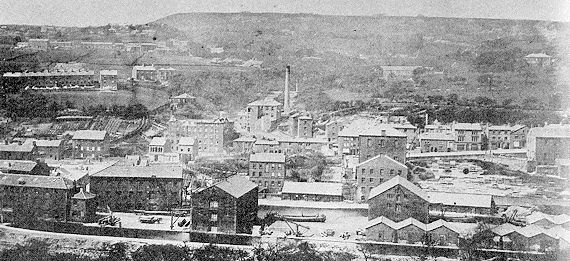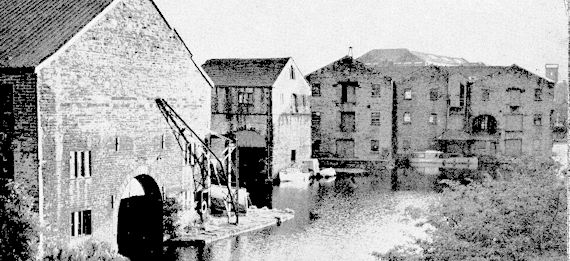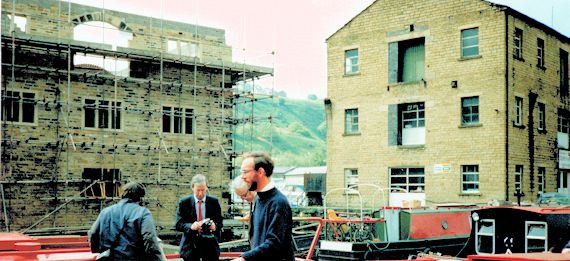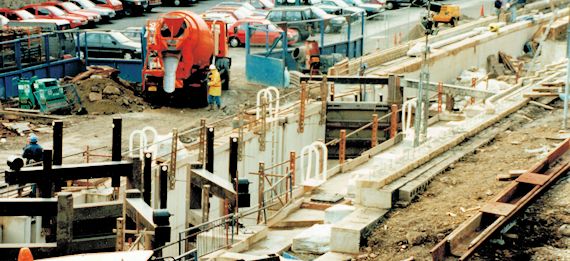History of Sowerby Bridge Wharf
Think back to the time of the American War of Independence, and the French Revolution - a time of turmoil throughtought the developed world. And what do we find? - another revolution, in transport and industry.
Huge investment was made without any certainty of return: our ancestors were remarkable men - would we be so bold today?
1775
The declaration of Independence in Philadelphia will lead to the loss of the colony and to the French revolution in 1789. Calder House was built for Thomas Walpole, Clerk to the Navigation. His package included the provision of horses and stabling, as well as a substantial Georgian house with offices underneath. The Calder & Hebble Navigation was joined in 1805 by the Rochdale Canal, connecting the ports of Hull and Liverpool. As the interchange point between two canals of different gauges, Sowerby Bridge Wharf became an important and thriving centre, feeding the growing textile and other industry of Sowerby Bridge and Halifax - despite the long Napoleonic wars.

1914
The coming of the railways had already badly affected trade. The closure of the Humber ports during the First World War dealt the canals in Sowerby Bridge a mortal blow.
1948
The Calder & Hebble Navigation - still the same company which had built the canal nearly two centuries before- was nationalised. By this time traffic to Sowerby Bridge was almost finished: the last coal came to the gasworks in 1955. The Wharf fell into disuse and neglect.

1970
The Local Authority considered pulling the buildings down to make a car park, but Halifax Civic Trust and the Inland Waterways Association campaigned for the recognition of the Wharf as historically and architecturally important. Mark Andrew took a lease on the site and started to repair and let the buildings. Soon boat building, sales and hire were joined by Ian Clay's The Moorings pub. The Salt Warehouse Trust embargs on an ambitious restoration.

1985
The Rochdale Canal, closed since the War, is being reopened by enterprising and far-seeing Calderdale Council. Six miles are ready, round Hebden Bridge, and Shire Cruisers starts to run boats on this section. Calderdale's heroic work culminates in the construction of the new lock and tunnel at Tuel Lane, just up the canal from the Wharf.

1996
Calderdale Council has long recognised the importance of the Wharf in the regeneration of Sowerby Bridge. English Heritage is increasingly concerned at the deteriorating state of the buildings. British Waterways is keen to turn the buildings into well-repaired income generators. The principal tenants want to develop their businesses in well-found buildings. All come together with the invaluable help of one of Prince Charles's charities, to produce a scheme which conserves the historic buildings and makes them available for commercial use, with public access.
2003
The Heritage Lottery Fund, English Heritage, British Waterways and the tenants put together the funding for an imaginative scheme of repair. All the buildings are brought into full use for the first time since before the War.
2015
More people work at Sowerby Bridge wharf than at the peak of canal carrying. For more on how we did it, see The Prince's Regeneration Trust.
